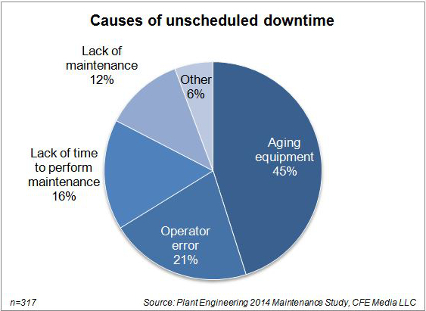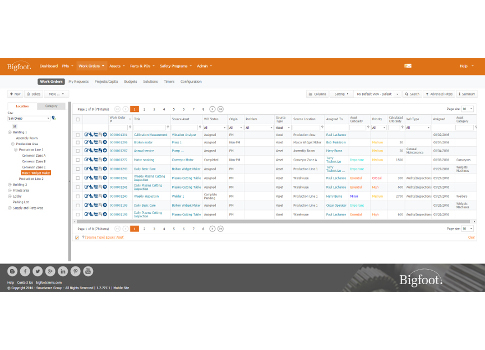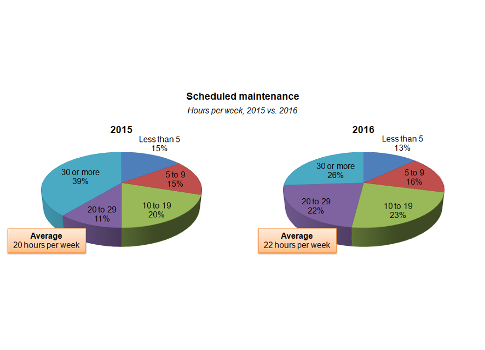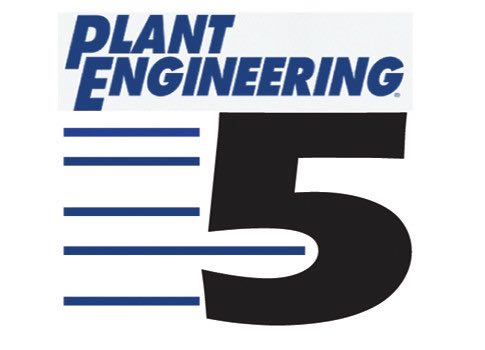Plants utilize multiple strategies to keep facility up and running.

The merits of a planned maintenance program are clear to the plant manager who must find it and keep it on task, according to Plant Engineering’s 2014 Maintenance Study. More than 60% of survey respondents said a planned maintenance program can decrease downtime, improve safety, and reduce the probability of production failure.
The main benefit of a reactive maintenance program, on the other hand, is its low initial cost, which was cited by 51% of survey respondents. Only 15% of respondents said such a strategy decreased downtime, and just 7% said it improved safety.
“The value of any kind of planned maintenance effort has been clear to most manufacturers, but this research clearly shows that even the people who practice reactive maintenance—what we call ‘break-fix’—don’t believe it helps their operation,” said Bob Vavra, content manager of Plant Engineering.
“This ‘break-fix’ mentality is driven largely by an attempt to save money up front,” Vavra said, “but it has been shown time and again that the cost of downtime extends beyond the cost of the broken part to lost product, wasted man-hours and safety concerns.”
In any of the planned maintenance strategies, decreased downtime was seen as a significant advantage. Additionally, the study found:
- Condition-based maintenance: Sixty-one percent of respondents said this strategy reduced downtime, another 61% said it reduced the probability of parts failure, and 58% said it increased the probable life of a component. Fifty-two percent of respondents said it was, overall, cost-effective.
- Reliability-centered maintenance (RCM): Sixty-four percent of respondents said it decreased downtime, 57% said it reduced the probability of parts failure, and 54% said it increased the probable life of components. Fifty-eight percent of respondents said it was, overall, cost-effective.
- Predictive maintenance (PdM): Seventy-six percent of respondents said it decreased downtime, 70% said it reduced the probability of parts failure, and 64% said it increased component life. Fifty-five percent of respondents said it was, overall, cost-effective.
- Reactive maintenance: Twenty-seven percent of respondents found it to be cost effective overall, with just 15% saying it decreased downtime, and 3% said it reduced the probability of failure. Its primary benefit is seen as its low initial cost.
Plants do use multiple strategies within the facility, however. The study found 87% of plants use some level of planned maintenance, 57% use reactive maintenance, 49% use predictive maintenance, 35% use condition-based maintenance, and 23% use reliability-centered maintenance.
“There are some pieces of equipment for which reactive maintenance does make sense,” Vavra said. “The use of multiple strategies on the plant floor, therefore, would be a sound overall strategy. What is clear from the research is that a reactive maintenance strategy alone is a recipe for disaster, and any strategy that includes reactive maintenance must include some other plan as part of the overall maintenance process.”
The time spent on maintenance seems to buttress this difference. Among respondents, 42% said they spent at least 30 hours a week on scheduled maintenance, while 39% said they spend between 10 and 30 hours each week. Just 20% of respondents said their maintenance took up less than 10 hours a week.
Maintenance attitudes
There was an even split in the study over the value of maintenance in manufacturing. While 41% of respondents said maintenance was a profit center that could deliver increased plant capacity, 39% saw it as a cost center, but necessary to keep equipment running. Just 7% of survey respondents said maintenance was a necessary evil.
The greatest challenge to overcoming unscheduled downtime is not maintenance, but aging equipment. The study found 45% of respondents said equipment age was the leading cause of unscheduled downtime, while 21% cited operator error. Another 16% said the lack of time to complete maintenance was the key factor, while a lack of overall maintenance was cited by just 12%.
The plan to decrease downtime, revolves around better planning and better equipment. Increasing preventive maintenance was cited by 31% of respondents as the way they were looking to decrease downtime, while 20% were looking to upgrade equipment, and 14% wanted to improve maintenance training.
“After four solid years of growth in the manufacturing market and with the continuation of historically low interest rates, capital investment may be a key theme in 2014,” said Vavra. “This study shows that plant managers believe new investment in equipment and strategies could yield lower long-term costs for manufacturers willing to reinvest in their plants.”
The issue of outsourced maintenance also was discussed with Plant Engineering readers. While just 4% of survey respondents said they outsource most or all of their maintenance functions, 63% said they do outsource at least some of their maintenance, and another 16% outsource up to half of it.
The changes in skills sets for both the workers and the equipment were cited as the primary driver for outsourcing. The 47% of respondents said the lack of current staff skills led to outsourcing some maintenance, while 46% cited the number of specialized skills needed for such maintenance, and 35% said the budget wasn’t in place to hire specialized individuals on a full-time basis. Another 26% said skilled workers, even on a full-time basis, simply were not available.
The type of equipment also dictates the amount of attention from maintenance. Rotating equipment, for example, received more direct attention (65%) than any other type of process, although plant automation systems (52%), fluid power systems (51%), material handling systems (49%), and electrical distribution systems (44%), all received significant attention, and no single system was ignored by more than 12% of respondents.
Download the complete 2014 Maintenance Study report at www.plantengineering.com/research.



